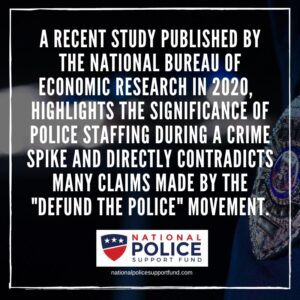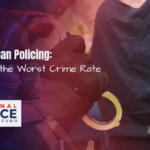Over the past few years, conflicting political forces have called for radical changes in police powers and tactics. However, many of these reforms are based on ideological principles, rather than an evidence-based approach. As a result, police crime-fighting abilities have been severely hindered across the country – which has ultimately resulted in unsafe communities, a demoralized force, and a fearful society.
But with crime rates – and especially murders – on the steady rise, it may be time to re-examine priorities and strategies.
What’s Happening with Our Murder Rate?
Over the past 3 years, the prevalence of violent crimes has been steadily climbing. Following a couple of decades of increased security, 2020 marked a turning point for law enforcement:
- In 2020, the murder spiked by nearly 30%, amidst the generalized chaos of the early pandemic
- The following year, major cities experienced a further 10% increase
- Throughout 2022, the trend continued, nearly reversing all the gains we made since the 1990s.
These phenomena happened at the same time as large groups of civil society began advocating for limited police spending. But would “defunding the police” be the most effective way to revert the dangerous murder trends?
Which Policing Strategies to Reduce Crime Work Best? Here’s What the Research Says
In reality, criminologists have been testing the effect of different strategies on police crime-fighting abilities. Some of these studies are more applicable to rural, urban, high-crime, or high-income jurisdictions, and they may not be equally relevant everywhere.
And yet, we have enough data to efficiently guide our policing strategies. One of the most important recent studies dates back to just 2020 and was published by the National Bureau of Economic Research. This report highlights the importance of police staffing during a crime spike and directly contradicts many of the claims by the “defund the police” movement.
Its key finding? That each extra police officer helps us prevent or deter 0.1 homicides. The effects are bigger in urban, high-crime areas.
In addition, other recent experiments have increased the weight behind three key strategies.
The Diffusion effect

As illustrated a 2019 study from the Journal of Experimental Criminology reviewed the evidence behind the “diffusion effect.” This is the effect that increased police exercises have on the surrounding areas that are not directly targeted.
Overall, they found that when a crime hotspot saw increased crime-fighting exercises, crime rates tend to drop both in the targeted area and the surrounding neighborhoods. This is particularly relevant for large cities, where residents often fear that fighting crime in one area will simply “displace” criminals to their backyards.
The SARA approach
The SARA approach to crime prevention is currently one of the most effective models of “issue-based policing” – that is, crime-fighting strategies that focus on specific chronic issues.
SARA stands for “scanning, analysis, response, and assessment”. The strategy calls for an ongoing cycle of detecting key problems, analyzing the best response, executing it, and assessing its effects. This systematized method provides an efficient way to sustain and plan for long-term strategies, although it also works for short-termed crime spikes.
Focused Deterrence
Finally, a recent review of the Campbell Collaboration examines the effect of focused deterrence. This is an evolution of problem-oriented policing that specifically approaches individuals and organizations that are actively engaged in crime (mainly gang members, or young people at risk of joining gangs).
Through focused deterrence, these potential or past criminals are offered the opportunity and resources to cease criminal activity. This may be in the form of extra benefits, educational opportunities, or job programs. However, if these opportunities are not answered with lawful behavior, the consequences must be visible and swift.
According to the studies we have so far, this strategy is largely effective and is often followed by a decrease in crime rates. However, as these strategies require heavy involvement with other community organizations, it is not easy to put them to the “randomized controlled trial” test.
What About Police Accountability?
Most criminal justice experts nowadays agree that increasing police accountability will provide a net positive effect on society. The population at large needs to rebuild its trust in the local Police Departments. This will require visible examples where law enforcement agents make amends whenever abuse or racial profiling has occurred.
But this should not be mistaken for “replacing” the police. Instead, it should be viewed as a “yes, and” situation. Many communities require better-funded social services, but they also need an efficient and well-funded police force.
Image Credit: Phot by Mark Boss on Unsplash









